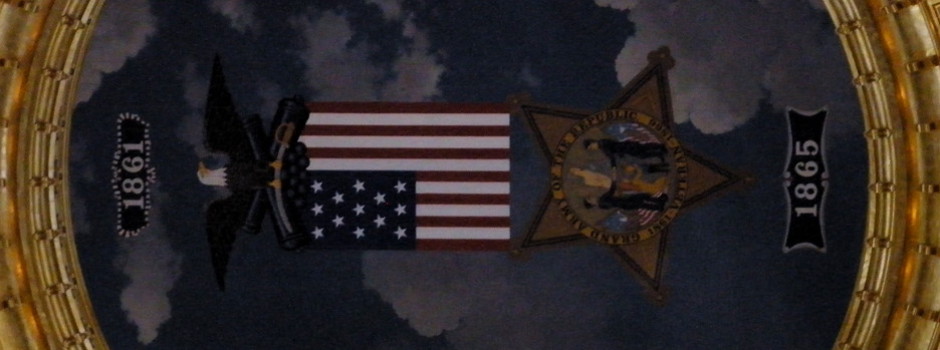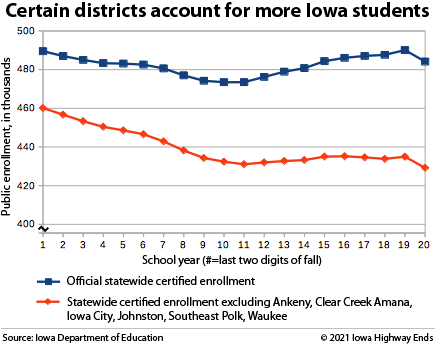The first takeaway from the 2020-21 certified enrollment list is the most obvious: There were big drops across the board. Growing districts that had not seen decreases in years if not the century to date (Ankeny!) lost kids.
- There were no official consolidations for the second time in the past decade (2017). A handful that have united their sports teams to the point that new facilities are designed to reflect it remain legally separated.
- Of Iowa’s 25 largest districts, only 5 saw gains: Waukee, Cedar Falls, Ottumwa, Fort Dodge (barely), and Clinton.
- 38 districts have enrollments under 300; of those, 19 have their own high school. Some are in partial-day sharing with others.
- Des Moines’ enrollment is about the bottom 96 combined.
- In the past five school years, Waukee added the entire enrollment equivalents of Earlham, Cardinal, Lake Mills, East Union, and Harris-Lake Park.
- In the past five school years, Ankeny added the entire enrollment equivalents of Sidney, Turkey Valley, Calamus-Wheatland, and Laurens-Marathon.
- In the past five school years, Iowa City and Clear Creek Amana, between them, added the entire enrollment equivalents of Coon Rapids-Bayard, Janesville, Ar-We-Va, and Springville (but this year lost the enrollment of Lu Verne). This is a combined number, but I think this method is the best way to deal with the issue of North Liberty being split between them.
- By the way, the Class of 2021 was born in 2002-03. I have MP3 files that are older.
Here is another way to illustrate the continued gains of limited areas at the cost of everyone else:
During the 2010s, overall state enrollment showed a steady increase, but the bulk of the state grew at a much lower rate. The six districts noted in the legend accounted for 6% of the state public school student body in 2001; it’s 11.35% today. To get 11.35% of student enrollment counting up from the bottom, we need 42% of Iowa’s districts (138 out of 327), from Diagonal and Stratford up to Gladbrook-Reinbeck and Treynor.
Des Moines Independent, by far the largest in Iowa, has steadily accounted for around 6.5%. Des Moines plus the six singled out above — not even counting other extremely large districts — account for more than one-sixth of all Iowa public school kids.
When Waukee’s second high school opens this fall (for certain definitions of “open”?), West Des Moines will once again become Iowa’s largest single-high-school district, a position it hasn’t held for nearly a decade. Waukee’s 10th elementary school is expected to open in the fall of 2022. Its estimated 600 students alone would be bigger than 145 districts — Nashua-Plainfield and everyone smaller.

